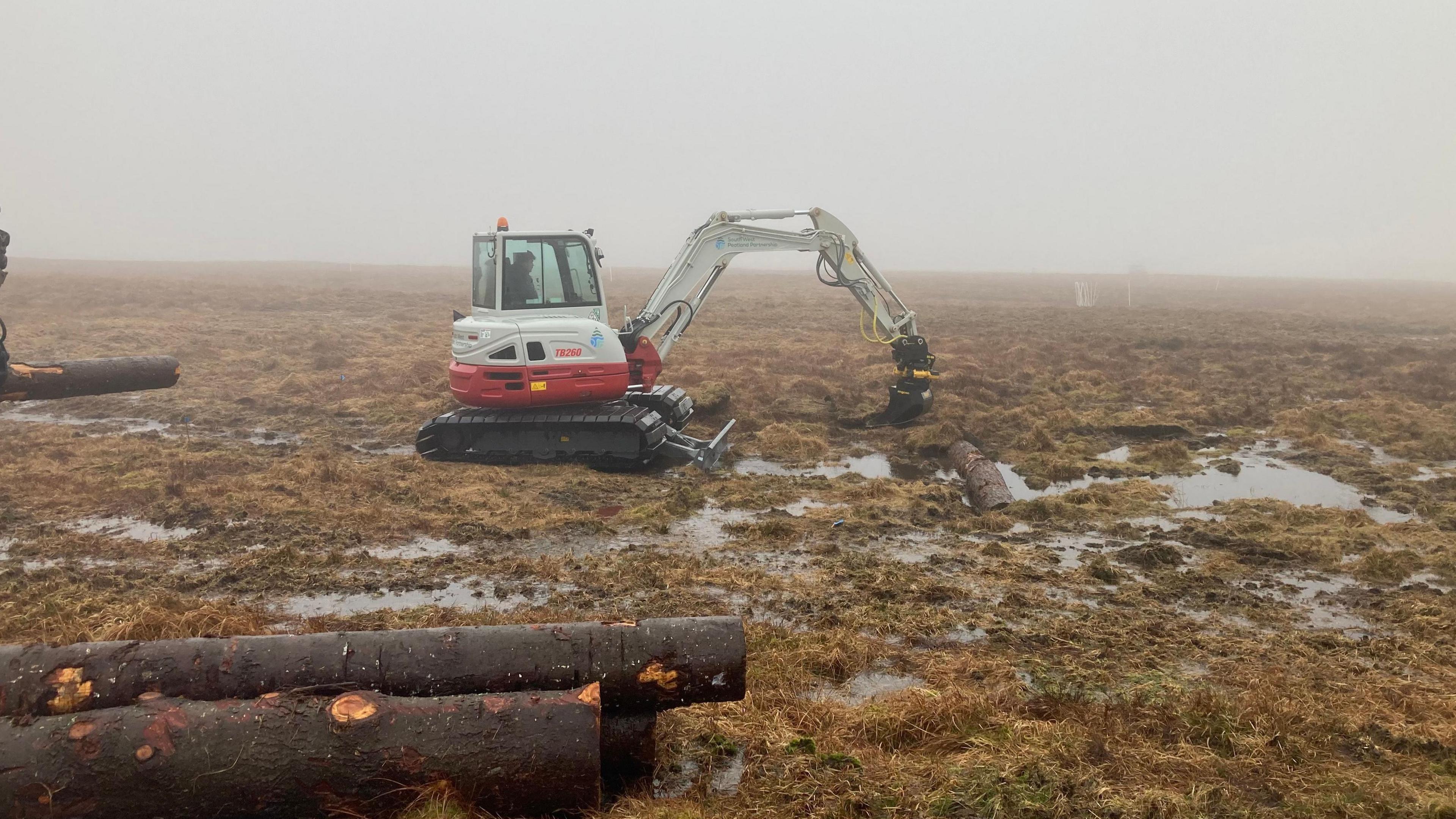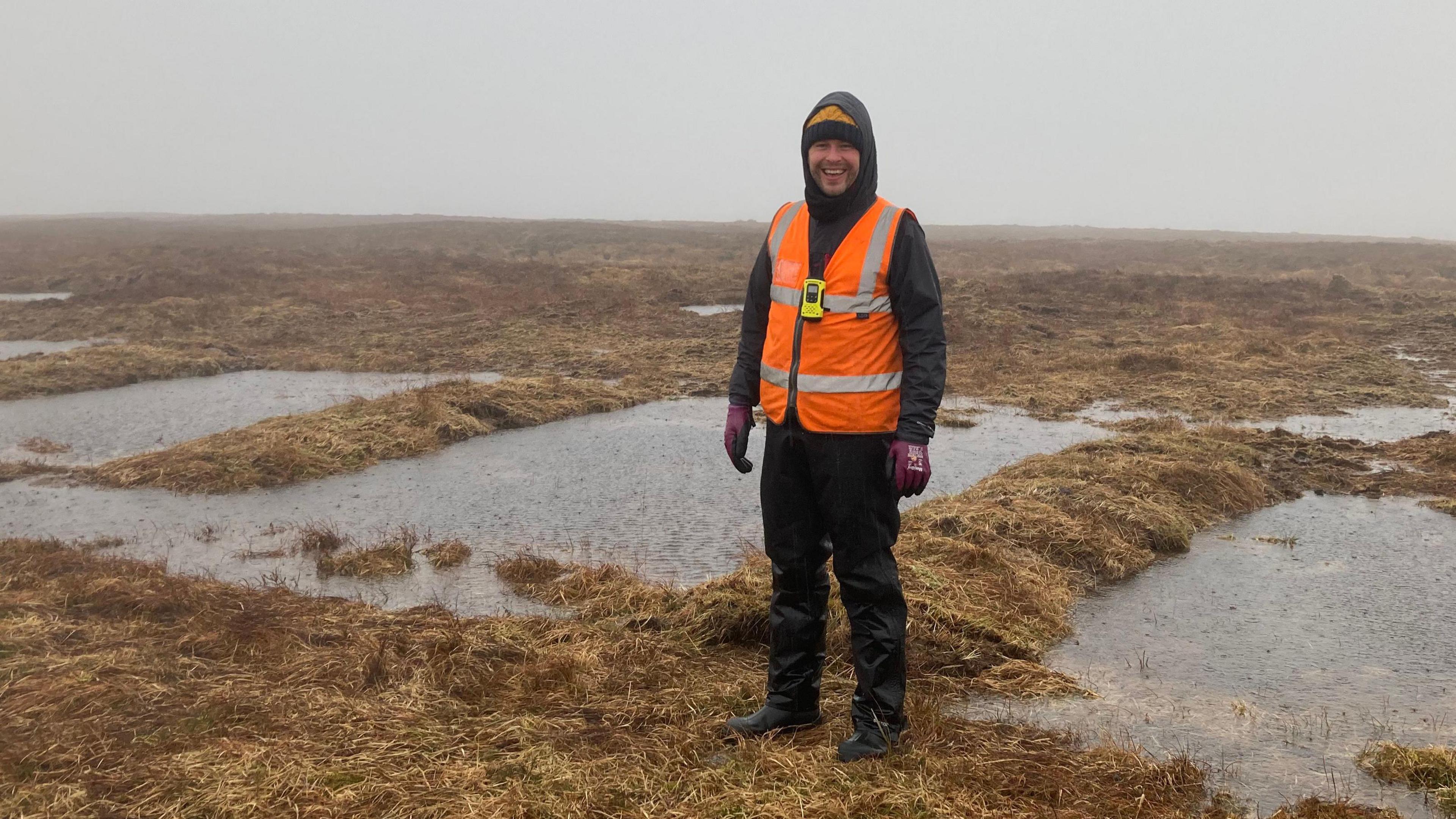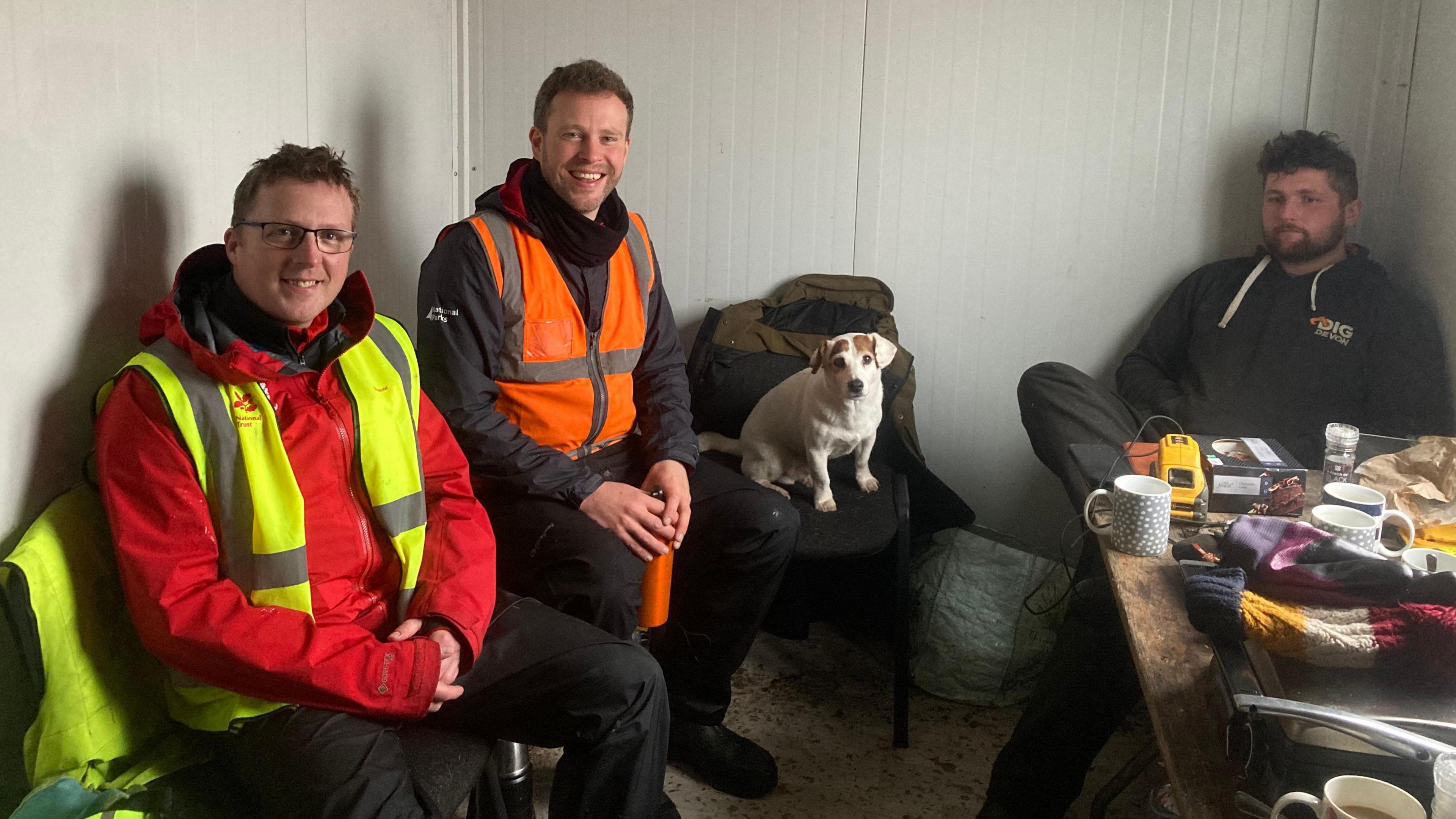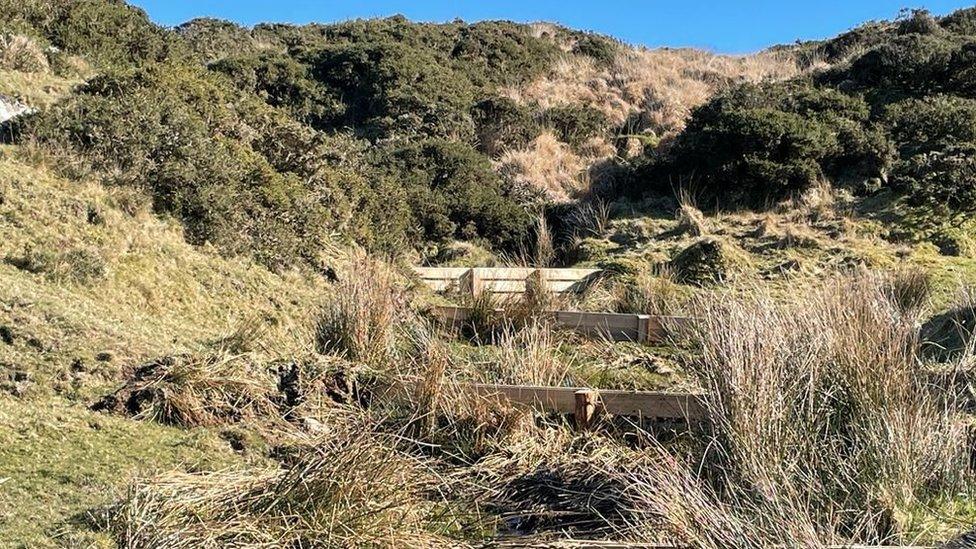Peat bog slowly coming back, conservationists say

A low-impact digger helping create pools of water on the moorland to help restore peat bogs
- Published
A project to restore peat bogs on Dartmoor is starting to reverse habitat loss, conservationists have said.
The South West Peatland Partnership (SWPP) is aiming to restore degraded peatland on the Devon moor as part of a £13m project.
Peat, formed from dead and decaying vegetation, is a type of soil that stores vast quantities of carbon.
The SWPP said the restoration was happening after Dartmoor's peat bogs had been severely damaged or dried out through industry, ordnance testing by the Ministry of Defence and climate change.
The partnership has been blocking gullies and creating pools of water across a 33-hectare (82-acre) site at the head of the River Plym.
It said the process helped reduce run-off, raising and stabilising the water table within the peat.
This slows the release of water, reducing flooding and the likelihood of drought, as well as capturing carbon.
Jonny Robinson-Noades, a project officer for the SWPP, said it was a slow process - but it was working.
He said: “We are altering the landscape to bring back a wetland.
"These wetlands would have been here before we had all of the human intervention a long time ago, so to see a habitat being restored, albeit slowly, it just really makes my heart sing.”

Jonny Robison-Noades said the habitat was slowly being restored
The partnership is made up of South West Water, Dartmoor National Park Authority, the National Trust and Exmoor National Park Authority.
The work was also providing a look into the industrial past of Devon's moorland, a vital habitat for amphibians and insects such as dragonflies, helping to attract wading birds such as the curlew and dunlin, project staff said.
Steve Edmonds, a peatland ranger for the National Trust, said it was a "unique habitat".
He said: "There's not many parts of the world that have blanket bog like we've got on Dartmoor, Exmoor and Bodmin.
"It's really important to keep it as pristine as we can."

A warm cabin has been set up on the site due to unpredictable weather conditions
Work on the site is to halt at the end of March to not disturb nesting birds.
George Northmoor, from Devon Groundworks & Construction, said careful planning had gone into making sure the already fragile habitat was not disturbed.
He said the diggers, which get to the site at Great Gnats Head, drive three hours over the moor with specially designed tracks.
"They are all on low pressure tracks, polymer pads, so they are less than one PSI.
"They make less mess than a human footprint would."
- Published14 March 2023

- Published11 February 2023
